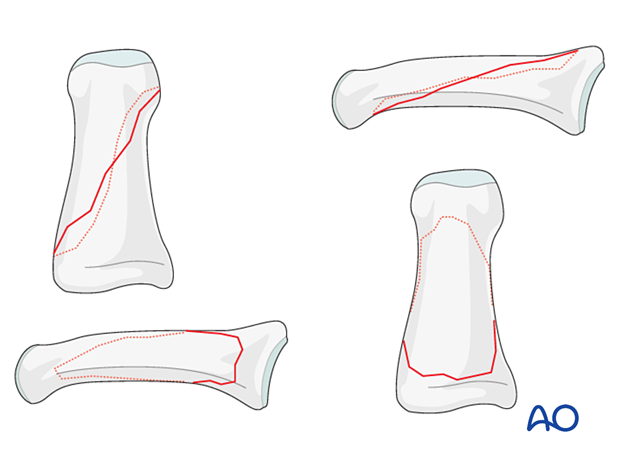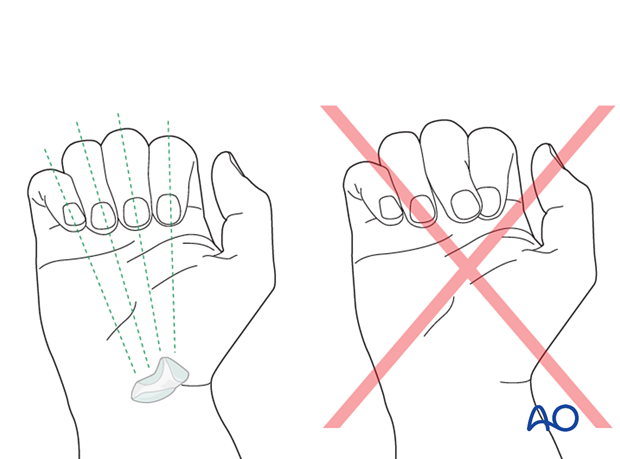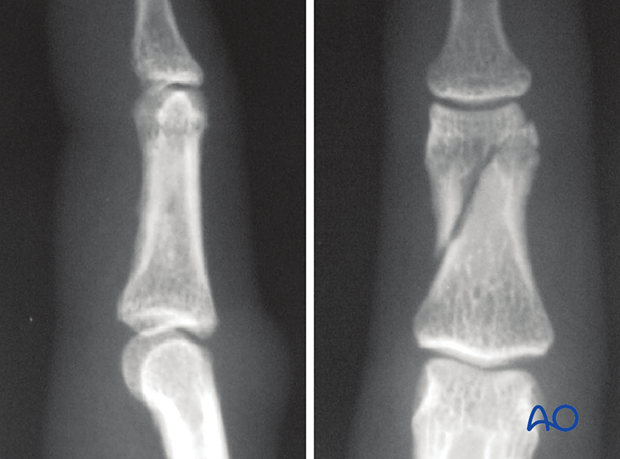Oblique extraarticular or diaphyseal fracture
Definition
Simple oblique metaphyseal and shaft fractures of the proximal phalanges are classified according to AO/OTA as 78.2–5.2.1A, 2A, and 3A, respectively, where 2–5 indicates which finger is injured.
The fracture may be oblique in the coronal or sagittal planes. The orientation of the fracture should be assessed with two orthogonal x-ray views.

Further characteristics
Rotational deformity
In fractures distal to the proximal interphalangeal (PIP) joint, overlap of neighboring fingers may occur when there is substantial rotational displacement.

Outcomes
Outcome of fractures of the middle phalanx is usually more favorable than those of the proximal phalanx. This is largely because limitations in distal interphalangeal (DIP) joint motion are not such a disability as similar stiffness of the PIP and metacarpophalangeal (MCP) joints.
Imaging
AP and lateral x-rays should be taken.
In this example, an oblique fracture in the sagittal plane is demonstrated in the AP view but is difficult to define on the lateral view.














